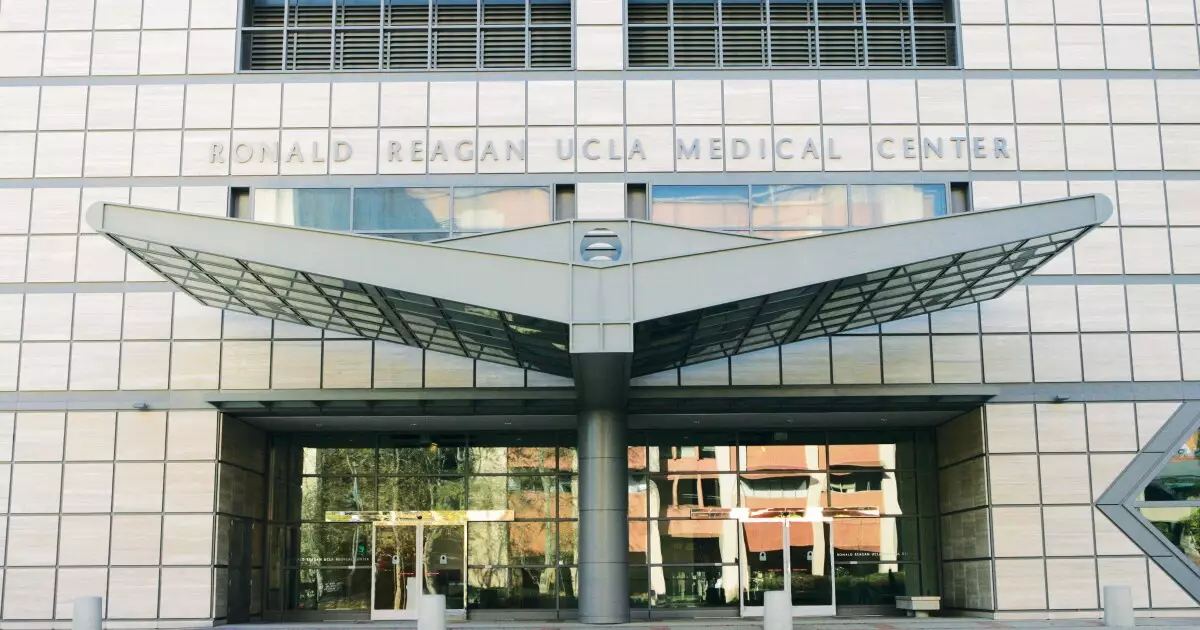In an era where higher education’s stability is increasingly precarious, recent federal budget proposals introduce an unprecedented challenge. The planned cuts to Medicaid, amounting to nearly a trillion dollars over the next decade, threaten to destabilize the very backbone of America’s public universities. Such reductions are not just a bureaucratic maneuver—they are a direct assault on the capacity of institutions to provide quality healthcare, conduct vital research, and serve their communities. This is an undeniable, strategic blow that will reverberate through the academic ecosystem, jeopardizing jobs, research, and access to healthcare for countless Americans.
The University of California system, including its sprawling health network, exemplifies the gravity of this threat. With medical centers that cater extensively to Medicaid beneficiaries—covering over a third of inpatient days—these campuses are on the frontlines of public service and innovation. Deprived of federal support, they will be forced to make difficult financial choices, potentially leading to layoffs, reduced services, and even compromised research programs. Such outcomes threaten the very mission of these institutions, blurring the lines between education, healthcare, and societal wellbeing.
But the implications extend beyond UC. State-funded universities across the nation, already struggling with declining enrollment and shrinking budgets, will find themselves further squeezed. As federal funds dry up, states might respond by slashing their own support, creating a catalytic effect that endangers the financial viability of public higher education. Historically, the sector has been resilient through cyclical crises; however, these recent policy shifts introduce systemic risks that could undermine decades of progress.
The Cascading Economic Fallout for Public Universities
The financial health of universities hinges on multiple revenue streams—tuition, endowments, research grants, and government funding. When one pillar weakens, the entire structure wobbles. The proposed federal cuts to social programs will likely cause state treasuries to tighten, leaving universities scrambling for alternative sources of funding. This phenomenon is not hypothetical but an imminent reality, with potential long-term consequences that could reshape the landscape of American higher education.
Take the California State University system, which derives nearly 40% of its revenue from state coffers. An immediate budget contraction would intensify existing financial pressures, forcing administrators to consider tuition hikes, credential reductions, or program cuts. Conversely, the University of California, with a more diversified revenue base, especially from its large health systems, may demonstrate relative resilience. Nevertheless, its significant dependence on Medicaid—constituting roughly 41% of its revenue from patient care—means it is not immune. The complex pooling of bond revenues and health service income, although providing some buffer, cannot completely shield these institutions from the broader economic storm brewing on the horizon.
The broader credit implications also cannot be ignored. Moody’s downgrade warning signals mounting financial stress, making it costlier for universities to borrow for expansion or infrastructure projects. The resulting decline in bond ratings could hinder future capital investments—crucial for maintaining competitiveness and meeting educational demands. Moreover, a systemic funding contraction will exacerbate the tuition-price spirals and deepen inequality, as access becomes increasingly limited to those able to afford it.
The Political and Fiscal Strategy: A Double-Edged Sword
At the heart of this crisis lies a fundamental ideological clash: a conservative push to scale back federal entitlements and social programs in favor of fiscal austerity. While proponents argue that reducing Medicaid and slashing federal spending curtails waste and promotes fiscal responsibility, the negative fallout for higher education suggests a dangerous shortsightedness.
The new endowment excise tax is a prime example. Instead of fostering philanthropy or encouraging investment in innovation, this measure imposes punitive taxes on successful private institutions—those that ideally should serve as anchors of advanced research and education excellence. The 8% tax on large endowments discourages long-term strategic investments and undermines competitiveness in a global academic arena. This is an ideological gamble, betting that central government retrenchment will not ripple outward, yet the evidence suggests otherwise.
Furthermore, the fed’s ideological stance risks conflating fiscal discipline with the erosion of public goods. Healthy, competitive universities are not merely beneficiaries of government largesse—they are vital engines of economic growth, societal stability, and technological innovation. To weaken their funding base under the guise of fiscal prudence is to undermine America’s long-term leadership and global standing.
Strategically, this approach assumes that universities can and should survive on their own—an assumption that ignores the essential public role they play. Without robust federal and state support, higher education risks becoming a privilege reserved for the elite, deepening societal fissures and threatening the decentralization of knowledge development.
The Broader Economic and Social Ramifications
This federal agenda’s ripple effect could usher in an era of higher tuition, increased student debt, and diminished access—especially for lower-income and minority populations. As universities grapple with rising financial constraints, their ability to fund scholarships, community programs, and research in critical areas such as public health and technology diminishes. The decline in federal research grants further stifles innovation, in turn hampering economic competitiveness.
The specter of increased endowment taxes and reduced federal funding epitomizes a broader retreat from investment in human capital. It reflects a troubling shift away from viewing higher education as a public good—not merely private enrichment. If universities are compelled into austerity, the nation risks surrendering its future to economic stagnation and social stratification.
Political rhetoric may frame such policies as justified austerity measures; however, the long-term damage reveals a neglect of strategic foresight. A nation that undermines its universities sacrifices its capacity to innovate, adapt, and lead on the world stage. As state and federal policymakers tighten their grip on domestic spending, universities are left to pick up the pieces—reduced services, increased costs for students, and a diminished role in societal advancement. This poses an existential threat not only to the institutions themselves but to the broader fabric of American prosperity and innovation.

